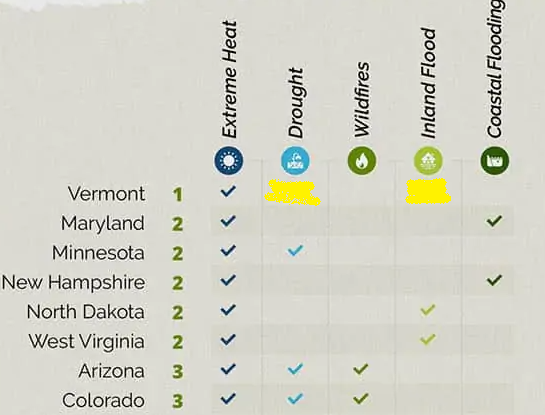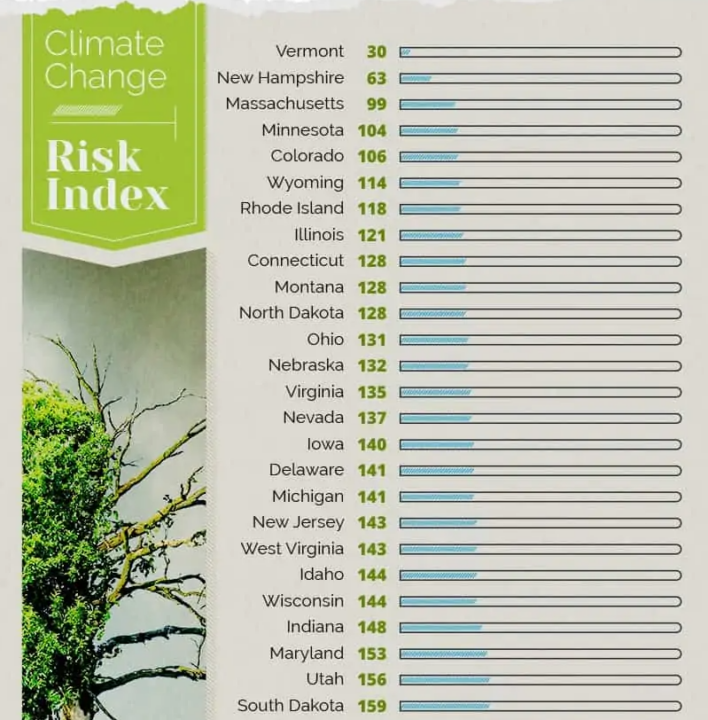I hope you like salt because this might take a grain or two. A weather fearmongering tag team comprised of the Daily Mail and something called SafeHom.org has compiled some data to produce what they call “The Best & Worst States for Climate Change in the US.”
Get a load of this.
The signs are clear — if humanity is unwilling or unable to significantly curb global warming in the next decade, the consequences for life on this planet will be dire. We could witness mass extinction events, dangerous sea level changes, more extreme temperatures, and increases in catastrophic weather events.
And this isn’t hypothetical; it’s already happening. In recent years, we saw record-breaking heat waves sweep across different parts of the world, bringing sweltering temperatures scientists say would have been impossible without the influence of climate change.
Despite near unanimous scientific consensus that the dramatic increase in global temperatures over the past century has been driven by human activity, limiting the causes of climate changes remains a contentious political issue — particularly here in the U.S.
I won’t revisit all the reasons why this is cherry-picked, ignorant, and just plain wrong—search the site for that. I’m here to explore the results of this climate equivalent of astrology, partly because those who came here to GrokVermont, had the best possible results. Despite the recent flooding (which is neither new, exceptional, or man-made), the Green Mountain Boys and Girls and Boygirlgirlboys live in the most weather-friendly state in the nation (according to SafeHome).
But even Vermonters who buy into the premise might disagree with their analysis (I added the highlights).

No frogs, burning hail, insects, or the angel of death, but from where I sit (roughly an hour away from their state border), the checkboxes for Vermont fall short. They don’t tag drought or inland flooding, which puts the entire exercise on notice, especially after the past two years. And what about ‘noreasters or bomb cyclone winter thingies?
Where did these climate mountebanks get their information, anyway?
To quantify which states are likely to have it the best (and worst) over the next several decades, we examined data published by Climate Central, a group of scientists and researchers focused on documenting the effects of climate change.
Climate Central isn’t what you’d call non-partisan, or their data what you’d call historical evidence by the focus on recent change absent everything that came before and the big miss on Vermont’s inland flooding problems.
Since I live there, New Hampshire came in second best (score of 63—Vermont’s was 30). We have a coast so coastal flooding, but absent historical context (actual science), this claim has no relevance. I suspect the entire report is similarly disabled.
Here is their climate risk index top 25 safest states (less safe the further along, of course)

You could also just as easily say that this list identifies weather risk based on whatever metrics are in play, absent the political and socio-economic agenda behind blaming man for the weather. To be truly accurate, you would need to assess several millennia of data since extreme weather in the context of human survival predates Marxism.
At the very least, we should look at weather and climate over the arc of human presence on planet Earth, at least as we understand it. This would undermine the current political agenda the same way that insisting the elites are manipulating the weather fails to explain why they didn’t do that during a decades-long hurricane drought or the precipitous decline in wildfires, tornadic energy, etc. when all their narratives promised events that then failed to occur.
There are plenty of malicious forces at work in our world, but most of them are communists wrecking everything or looking to take advantage of opportunities as they present themselves. This tactic includes people who too quickly buy into whatever the narrative mills puke onto the internet.
It works both ways. Let’s not forget that.
